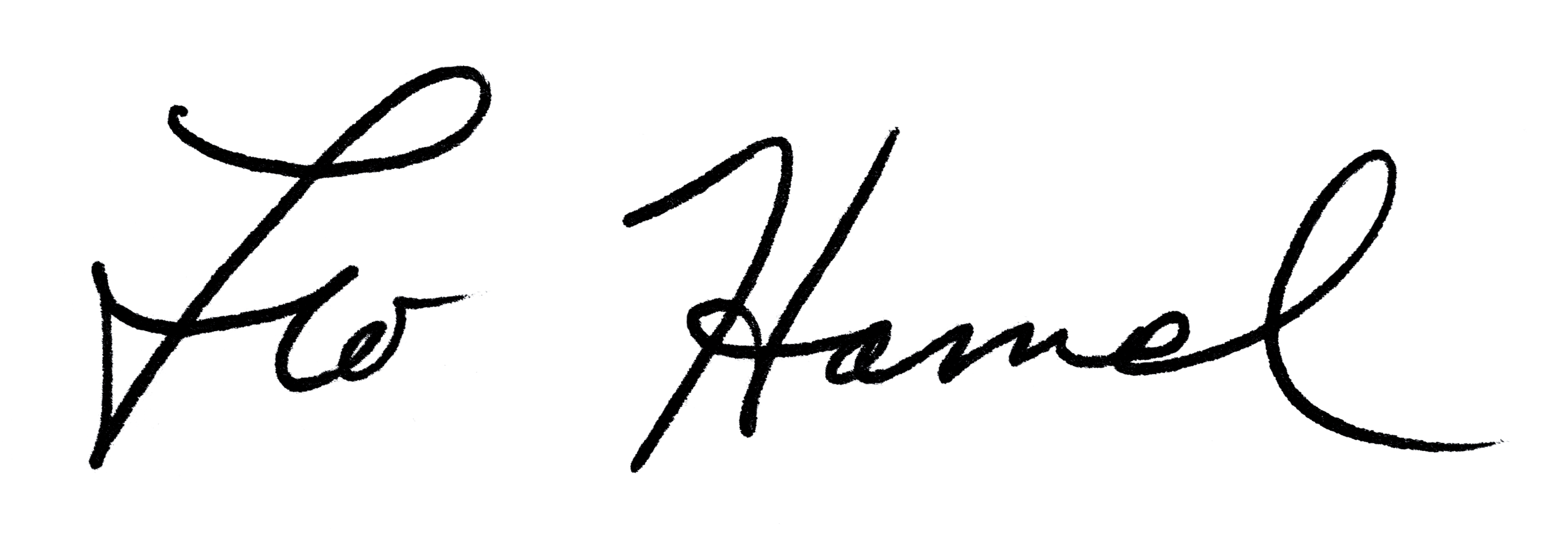
Leo Hamel Fine Jewelers Policy Letter
Advertising Must Sell
Notes on advertising gleaned from 29 years of experience
It is thought that we need to compete with the high gloss magazines for attention. However, if we try to make our newsletter look just like them, we’ll be lost in the crowd! How are we going to stand out if our newsletter looks like an imitation of a Tommy Hilfiger clothing ad? It’s far better to be unique, to look different, and to stand out from the crowd than to follow everyone else like sheep. No company ever got famous by being an imitation of what has already been done. The aim is to make our newsletter stand out in a pile of mail so that our customers see it distinctly from among the Cosmos, Victoria’s Secrets and People Magazines. Just another picture of a hollow-eyed woman with tousled hair isn’t going to have that effect.
I really do not care if we put people in our ads. What I don’t want is excess time or money spent on these pictures. People in ads are usually incredibly beautiful and perfect. If we insert humans because we think they make the ads more effective, we may be wasting our effort.
If we use models they need to be stunning, or what’s the point? (The exception being maybe the happy married couple, but if stunning is the real eye-catch then we may need them there too.) Can we afford goddesses? Do we have access to them for low or no cost? That is a consideration.
From what I have observed and studied, there are only two products of advertising:
- Image building (the Nike dash with no product, Exxon pretending like they really care about a few baby ducks covered in their oil) which makes the brand well known, well thought of or more accepted.
- Selling the product directly or indirectly (Mercedes showing their newest model, Singapore Airlines showing the wonderful food and seats on their planes and the real estate developer trying to convince you that an image of a scantily clad beauty equates to living in one of their overpriced homes).
Image building is a luxury that we cannot afford and since we have no real socially-desired action to sell, this is not where our successful campaign lies. If someone could reliably produce that type of image-building return, they would be making millions on Madison Avenue.
We must focus on the second product: selling the product directly or indirectly. SELLING PRODUCT is all that matters in this economy.
There is only one way to find out if advertising works and that is statistics: comparing cost to return (ROI) and comparing ROI of one campaign to another to see which is more effective. So if you wish to prove that putting pictures of people on the cover is more likely to sell jewelry then you need to do several issues without them and several with, and then we compare the two. Yearly trends must be factored out, as we know Valentine’s Day and Christmas produce higher sales regardless of advertising and sales are lower in the summer months.
None of the above is from a textbook or a course; it is from the real world at great expense of my personal dollars spent on advertising. Statistics are all that matter. Statistics show us results. I care about results over beauty, image or feel-good messaging. If putting homely, eighty-year-old, naked Republican hookers on the cover demonstrated the best results in sales, I’d be clamoring for more. That is a fact.
I care about selling product. I care about a 3+ ROI and then increasing that ROI as much as possible. So keep this uppermost in mind: all of our advertising, in this marketplace, deals with selling product we have. We are not trying to stimulate desire or want for products we might have in the future; it must concentrate on selling what we have in stock NOW:
- Vintage jewelry and watches
- Old stock of the brands we used to reorder but now just need to get rid of
- HOF, Bicego and IWC as we do judiciously restock those brands
- Engagement rings and diamonds, which crosses over all three items above
If the images and text sell product at an ROI of three or better, then they are working.
